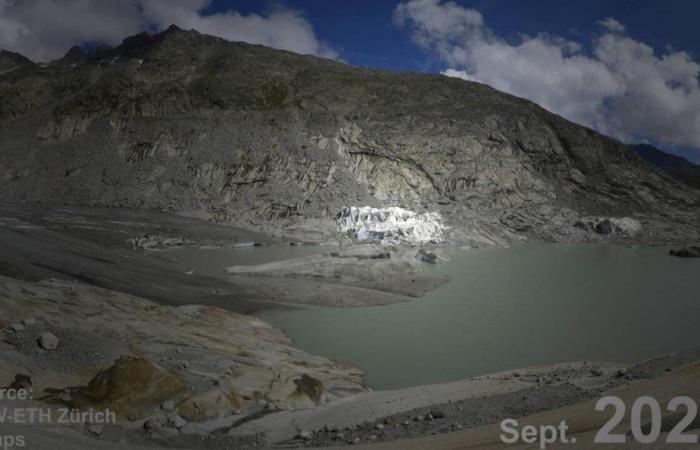Published on October 1, 2024 at 09:14. / Modified on October 1, 2024 at 09:15.
In Switzerland, glaciers have lost 2.5% of their volume in one year, according to the Swiss Commission for the Observation of the Cryosphere (CSC) of the Swiss Academy of Natural Sciences (SCNAT).
The conditions at the start of 2024 were nevertheless encouraging, as recalled by this Glamos study, published this Tuesday, October 1, 2024: “Until June, Swiss glaciers benefited from exceptionally favorable conditions thanks to more abundant winter snow. (30% more than average) and at a rainy start to the summer.”
A very cold winter, followed by a too hot summer
At altitude, the average snow depths between November 2023 and May 2024 are among the highest since observations began, particularly at Weissfluhjoch in Graubünden.
But the very high temperatures of summer reversed the trend. Even at 3000 meters above sea level, it hardly snowed between mid-June and mid-September. This situation is exceptional in the long term, but has been repeated more and more frequently in recent years.
On the Jungfraujoch, between the cantons of Bern and Valais, it was warmer in August 2024 than during the summer heatwaves of 2003 and 2022. So much so that that month recorded the largest loss of ice in Switzerland since the start of the measurements.
Dust from the Sahara amplifies the melting of ice
A climatic event helped to amplify this phenomenon. Dust from the Sahara, reaching Europe, colored the surface of the snow cover, “promoting the absorption of solar energy” and accelerating the melting of Swiss glaciers.
The loss of around 2.5% recorded this year is less than the 10% loss in 2022 and 2023 but still exceeds the melting average of the last decade.
#Swiss






